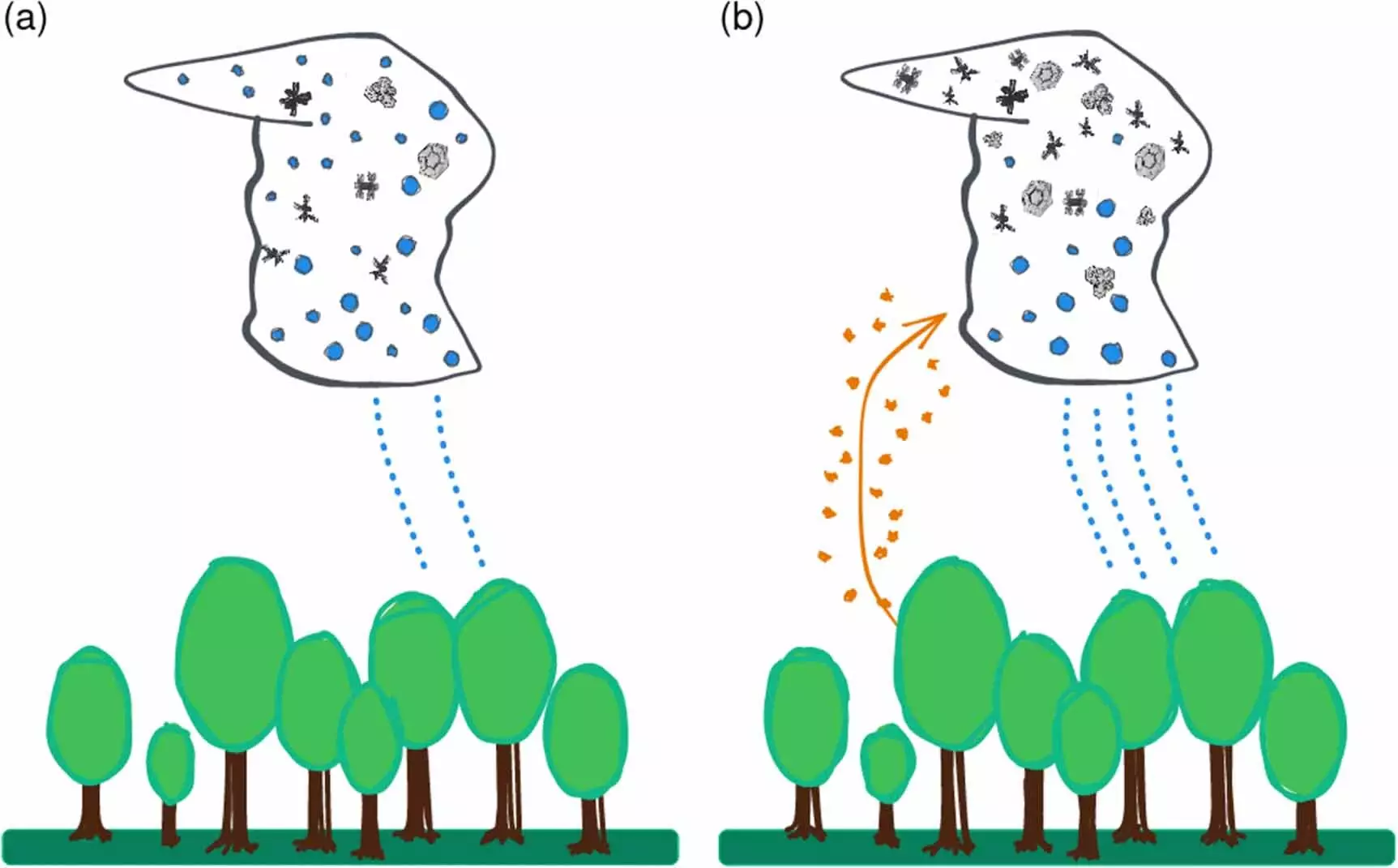In recent studies, a fascinating intersection has emerged between meteorological phenomena and biological processes, particularly highlighting the influence of pollen on precipitation patterns. This connection, predominantly observed through data from both terrestrial and satellite sources in the United States, unveils how pollen concentrations during the spring season contribute to cloud ice formation and precipitation, even in starkly cold conditions ranging between minus 15 and minus 25 degrees Celsius. The implications of this research extend not only into weather forecasting but also into understanding the effects of climate change and biodiversity on meteorological patterns.
Dr. Jan Kretzschmar, a meteorologist and lead author of a key study published in Environmental Research Letters, elucidates the role of pollen as ice-nucleating particles (INPs). These particles are critical in lowering the freezing threshold of water in clouds, facilitating precipitation at higher temperatures than would typically be possible. Under ordinary circumstances, without external nuclei like pollen, cloud water remains unfrozen until it reaches temperatures below minus 38 degrees Celsius. Such findings underscore the essential role that biological agents play in atmospheric processes, which has been largely overlooked amidst broader discussions focusing on more dominant INPs such as dust and soot.
As part of the Breathing Nature Cluster of Excellence project, a collaborative effort led by Professor Johannes Quaas from Leipzig University, researchers ventured beyond laboratory simulations to observe these natural processes in situ. The significance of these findings cannot be understated, particularly as they open a dialogue about the repercussions of climate change on both pollen release and subsequent precipitation dynamics.
Tremendous shifts in pollen behavior have been noted, primarily attributed to anthropogenic climate change. The ongoing warming trends are causing an earlier onset of the pollen season, alongside extending its duration, leading to increased pollen concentrations in the atmosphere. Such changes have immediate implications for weather patterns, potentially resulting in more frequent and intense localized precipitation events. This phenomenon can significantly alter the hydrological cycle in affected regions, resulting in both drought conditions and flooding scenarios, which might contribute to unpredictable weather extremes.
Moreover, as regions undergo habitat alteration and species loss due to climate change, we are likely to witness shifts in the types of plants that dominate the landscape. Many plant species share a synchronous flowering and pollen release period in the spring, which directly affects cloud formation and ice particle aggregation. A reduction in biodiversity could disrupt these synchronization patterns, ultimately transforming how atmospheric moisture behaves and how precipitation manifests.
One intriguing aspect of Kretzschmar’s research touches upon the behavior of pollen fragments. Larger pollen grains tend to remain suspended in the atmosphere for brief durations, diminishing their efficacy as INPs in colder air layers. Conversely, when pollen grains rupture under humid conditions, they disintegrate into smaller fragments that are much more adept at persisting in the atmosphere. These fragments can efficiently reach the cold layers of the atmosphere necessary for ice formation. This nuanced understanding underscores the importance of not only pollen quantity but also its structural integrity and fragmentation in influencing weather patterns.
The ramifications of these findings extend to future climate models and highlight the necessity for further research. By incorporating the interactions of pollen with other climatic factors, scientists can refine predictive models, enabling more accurate forecasts regarding precipitation trends in a rapidly warming world.
As climate predictions evolve, integrating biological components such as pollen into meteorological models could enhance accuracy significantly. The collaborative efforts of various research institutes, including the Leibniz Institute for Tropospheric Research and the Max Planck Institute for Biogeochemistry, emphasize the importance of interdisciplinary research in understanding the complexities of climate systems. Future inquiries must delve deeper into the biomechanical roles embedded in atmospheric processes to truly grasp and respond to the effects of ongoing environmental shifts.
Ultimately, recognizing the intricate connections between biology and meteorology provides not only a richer understanding of our climate but also offers critical insight into the strategies needed to mitigate adverse weather impacts driven by climate change. Understanding these dynamic relationships will be essential as we navigate an unpredictable climate future.


Leave a Reply